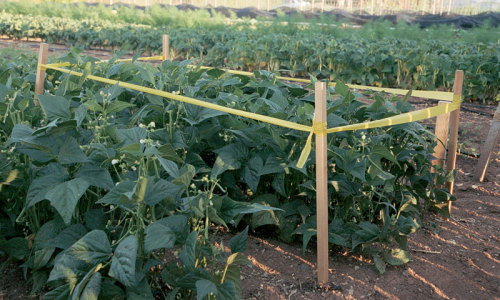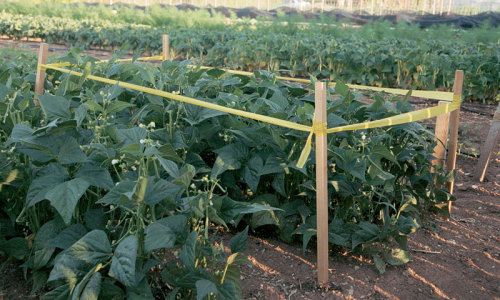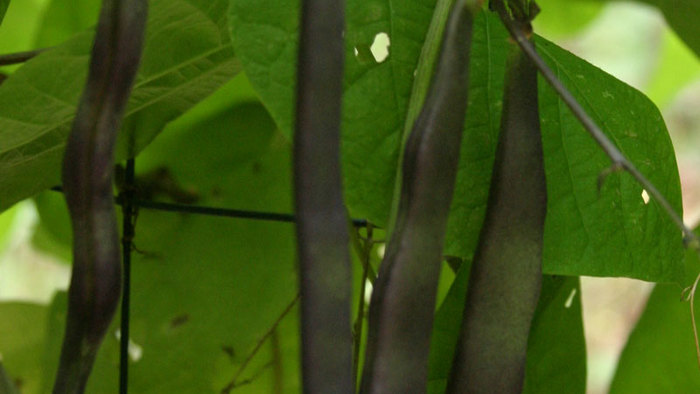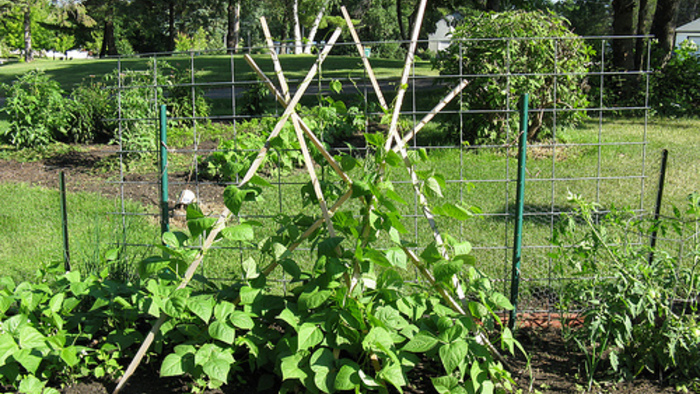
by Melissa Bateman
June 2001
from issue #33
Growing beans for seed saving is fairly easy. The main thing to bear in mind is that the smaller-seeded varieties are bred to hold on the plant without seeding up. You’ll have best success at harvesting seed if you sow a few extra plants with your first planting of filet beans and leave these to make seed. It takes another four to six weeks from the time beans are ready for eating until they’re ready to harvest for seed. I always mark the seed-saving plants with surveyor’s tape to keep them from being picked along with the eating beans.
 |
|
| The author marks the beans she plans to save for seed with surveyor’s tape so they won’t be picked by mistake. | |
Harvest the pods when they are brown and dry. The seed inside should be hard. Some varieties will shatter—meaning the pod will split open to disperse the seeds—so keep an eye on your seeds’ progress and harvest accordingly.
If all the seed pods are not completely dry, leave them on a screen to dry in a well-ventilated location. I store my bean seeds, pod and all, in a paper bag labeled with the variety name, the original seed source, and the year. Then some winter night I shell out the seeds by hand and return the seeds to the paper bag to keep until summer. If you live in a humid climate, you might want to store the shelled-out seeds in a canning jar, with the lid screwed tight.
Bean seeds can keep their vigor for many years. Each winter, I sort through all my seeds—we save several kinds of seeds here at our farm—and make a list of everything I have. At this time I also do a germination check with any seed I am uncertain about, testing the seed’s viability. To do this, I put 20 seeds (or 10 seeds if my supply is low) on a very damp paper towel, roll it up, and seal it in a ziplock bag. I write the seed name and date on the bag and put it on top of the refrigerator for warmth. A week later, I check for sprouting seeds. Based on how many seeds sprout, I adjust my planting as needed, sowing more thickly, re-ordering new seed, or planting as usual, knowing the seed germinated well.


















Comments
Log in or create an account to post a comment.
Sign up Log in